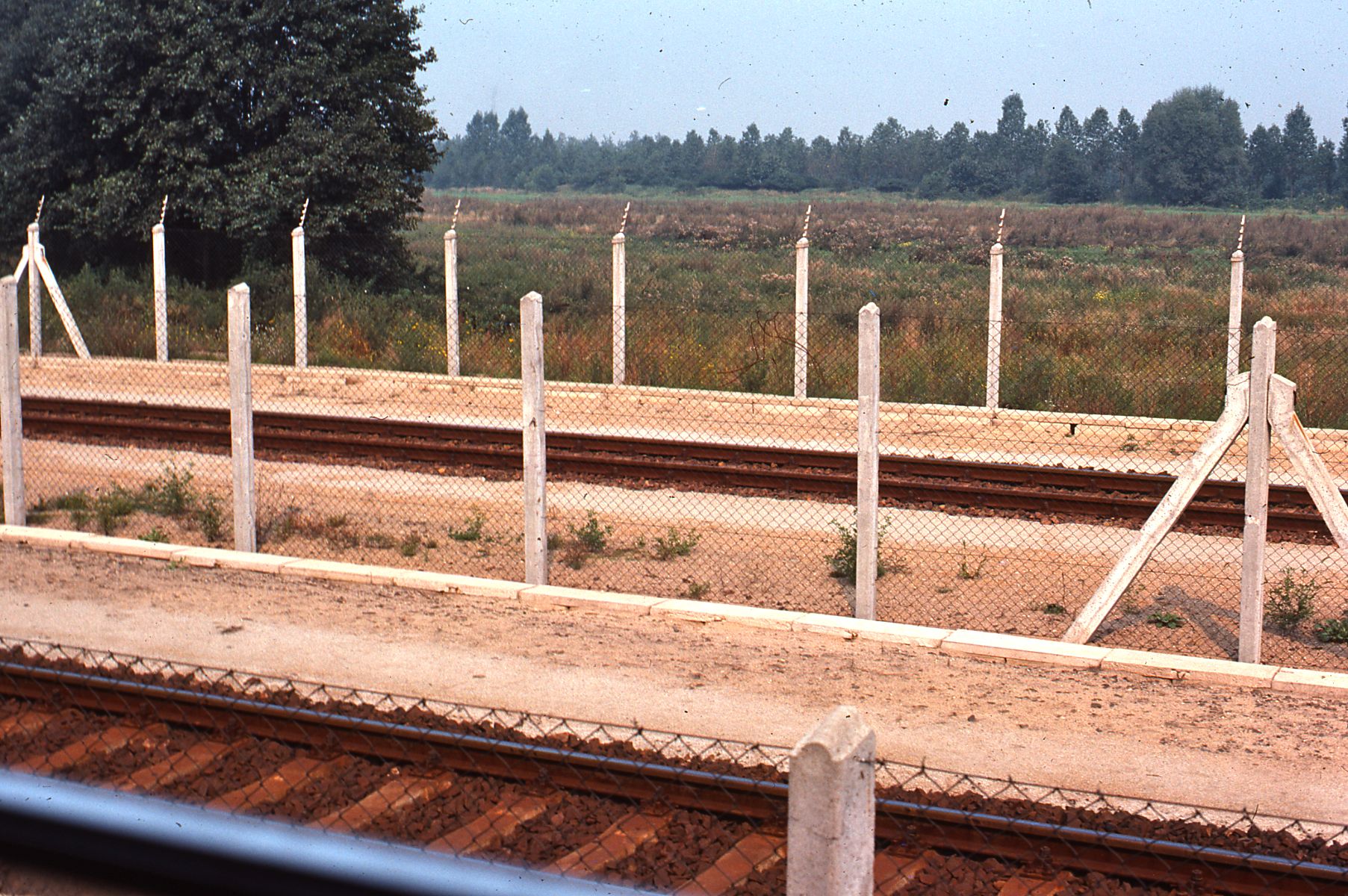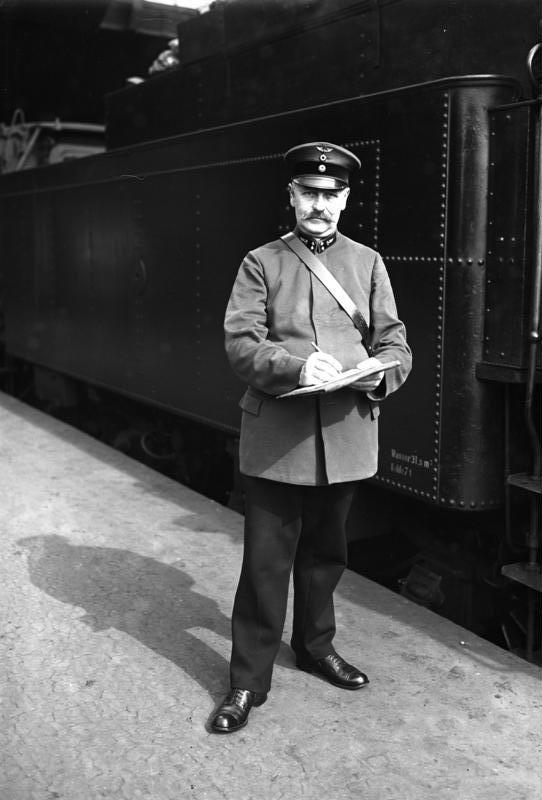|
Württemberg C
The steam locomotives of the Württemberg Class C were built for the Royal Württemberg State Railways in the early 20th century and were Pacifics designed for hauling express trains. They were the smallest state railway '' Länderbahn'' locomotives with a 4-6-2 wheel arrangement. History The 41 C class locomotives were built between 1909 and 1921 by Maschinenfabrik Esslingen. They were designed from the outset for the steep gradients in Württemberg and therefore had smaller driving wheels with only a 1,800 mm diameter. Despite being the smallest engines with a Pacific configuration, they were economical, yet at the same time very powerful. In all, 41 units of this class were manufactured. The appearance of the locomotives was relatively unusual at the time. Striking features included the outside subframe and the streamlined shape of the driver's cab and smokebox, resembling that of the Bavarian S 2/6 4-4-4 express locomotive and the later S 3/6 Pacifics. The locomotives ... [...More Info...] [...Related Items...] OR: [Wikipedia] [Google] [Baidu] |
Maschinenfabrik Esslingen
Maschinenfabrik Esslingen (ME), was a German engineering firm that manufactured locomotives, tramways, railway wagons, roll-blocks, technical equipment for the railways, (turntables and traversers), bridges, steel structures, pumps and boilers. Founding It was founded by Emil Kessler on 11 March 1846 in Stuttgart, as a result of an initiative of the Kingdom of Württemberg to create a railway industry that was not dependent on foreign manufacturers. Emil Kessler brought vital experience from his time with the engineering works in Karlsruhe, where he had been a member of the board since 1837 and the sole director since 1842. The foundation stone of the new factory was laid at Esslingen am Neckar on 4 May 1846. One year later, in October 1847, the first locomotive ordered by the Royal Württemberg State Railways (''Königlich Württembergische Staats-Eisenbahnen'') or ''K.W.St. E.'' was delivered. History After the death of Emil Kessler in 1867 his 26-year-old son, Emil Ke ... [...More Info...] [...Related Items...] OR: [Wikipedia] [Google] [Baidu] |
Deutsche Bundesbahn
The Deutsche Bundesbahn or DB (German Federal Railway) was formed as the state railway of the newly established Federal Republic of Germany (FRG) on 7 September 1949 as a successor of the Deutsche Reichsbahn-Gesellschaft (DRG). The DB remained the state railway of West Germany until after German reunification, when it was merged with the former East German Deutsche Reichsbahn (DR) to form Deutsche Bahn, which came into existence on 1 January 1994. Background After World War II, each of the military governments of the Allied Occupation Zones in Germany were ''de facto'' in charge of the German railways in their respective territories. On 10 October 1946, the railways in the British and American occupation zones formed the ''Deutsche Reichsbahn im Vereinigten Wirtschaftsgebiet'' (German Imperial Railway in the united economic area), while on 25 June 1947, the provinces under French occupation formed the Südwestdeutsche Eisenbahn. With the formation of the FRG these succe ... [...More Info...] [...Related Items...] OR: [Wikipedia] [Google] [Baidu] |
Passenger Locomotives
A passenger (also abbreviated as pax) is a person who travels in a vehicle, but does not bear any responsibility for the tasks required for that vehicle to arrive at its destination or otherwise operate the vehicle, and is not a steward. The vehicles may be bicycles, buses, passenger trains, airliners, ships, ferryboats, and other methods of transportation. Crew members (if any), as well as the driver or pilot of the vehicle, are usually not considered to be passengers. For example, a flight attendant on an airline would not be considered a passenger while on duty and the same with those working in the kitchen or restaurant on board a ship as well as cleaning staff, but an employee riding in a company car being driven by another person would be considered a passenger, even if the car was being driven on company business. Railways In railway parlance, passenger, as well as being the end user of a service, is also a categorisation of the type of rolling stock used.Simmons, J ... [...More Info...] [...Related Items...] OR: [Wikipedia] [Google] [Baidu] |
Railway Locomotives Introduced In 1909
Rail transport (also known as train transport) is a means of transport that transfers passengers and goods on wheeled vehicles running on rails, which are incorporated in tracks. In contrast to road transport, where the vehicles run on a prepared flat surface, rail vehicles (rolling stock) are directionally guided by the tracks on which they run. Tracks usually consist of steel rails, installed on sleepers (ties) set in ballast, on which the rolling stock, usually fitted with metal wheels, moves. Other variations are also possible, such as "slab track", in which the rails are fastened to a concrete foundation resting on a prepared subsurface. Rolling stock in a rail transport system generally encounters lower frictional resistance than rubber-tyred road vehicles, so passenger and freight cars (carriages and wagons) can be coupled into longer trains. The operation is carried out by a railway company, providing transport between train stations or freight customer facil ... [...More Info...] [...Related Items...] OR: [Wikipedia] [Google] [Baidu] |
Esslingen Locomotives
Esslingen may refer to: Places * Esslingen (district), a district (''Landkreis'') of Baden-Württemberg in southern Germany * Esslingen am Neckar, capital city of the district of Esslingen * Esslingen, Switzerland, a village in Switzerland * Eßlingen, a municipality in western Germany Other * Maschinenfabrik Esslingen Maschinenfabrik Esslingen (ME), was a German engineering firm that manufactured locomotives, tramways, railway wagons, roll-blocks, technical equipment for the railways, (turntables and traversers), bridges, steel structures, pumps and boilers. ..., a former locomotive manufacturing company based in Esslingen am Neckar See also * Esslinger (other) {{disambiguation, geo ... [...More Info...] [...Related Items...] OR: [Wikipedia] [Google] [Baidu] |
Locomotives Of Württemberg
A locomotive or engine is a rail transport vehicle that provides the motive power for a train. If a locomotive is capable of carrying a payload, it is usually rather referred to as a multiple unit, motor coach, railcar or power car; the use of these self-propelled vehicles is increasingly common for passenger trains, but rare for freight (see CargoSprinter). Traditionally, locomotives pulled trains from the front. However, push-pull operation has become common, where the train may have a locomotive (or locomotives) at the front, at the rear, or at each end. Most recently railroads have begun adopting DPU or distributed power. The front may have one or two locomotives followed by a mid-train locomotive that is controlled remotely from the lead unit. __TOC__ Etymology The word ''locomotive'' originates from the Latin 'from a place', ablative of 'place', and the Medieval Latin 'causing motion', and is a shortened form of the term ''locomotive engine'', which was first ... [...More Info...] [...Related Items...] OR: [Wikipedia] [Google] [Baidu] |
List Of Württemberg Locomotives And Railbuses
This list covers the locomotives and railbuses operated by the Royal Württemberg State Railways (''Königlich Württembergische Staats-Eisenbahnen''), the national railway company of Württemberg, a state in southwest Germany that was part of the German Empire. In 1920 the Royal Württemberg State Railways, along with the other German state railways (Länderbahnen), were merged into the Deutsche Reichsbahn. Locomotive classification The Württemberg state railway first divided its locomotives into classes in 1845. This first categorisation into classes I to VII was based on the order in which individual vehicles were procured. The scheme proved to be unworkable in practice, so in 1858 a new system was introduced as follows: * A - Light express and fast-stopping train locomotives * B - Heavy express and fast-stopping train locomotives * C - Light passenger train locomotives * D - Heavy passenger train locomotives * E - Light goods train locomotives * F – Heavy goods t ... [...More Info...] [...Related Items...] OR: [Wikipedia] [Google] [Baidu] |
SJ F (steam Locomotive)
The F class was a type of steam locomotive used by Swedish State Railways ( sv, Statens Järnvägar, SJ) and based on the Württemberg C. Eleven locos were built by Nydquist & Holm (NOHAB) between 1914 and 1916. It was primarily used on the main lines between Stockholm- Gothenburg and Stockholm-Malmö. It is one of the largest steam locomotives ever used in Sweden. The superheated compound locomotive could produce . Denmark During the 1930s the locomotives became obsolete due to electrification of the main lines, and in 1937 were sold to DSB of Denmark, where they served as DSB Class E DSB was so impressed with the performance of the E class that starting 1942, a further 25 locos were built by Frichs of Aarhus. The E class remained in service into the early 1970s. On the death of king Frederik IX the funeral train from Copenhagen to Roskilde on 14 January 1972 was double-headed by two class Es. Preservation Two of the Swedish-built locomotives are preserved and F 120 ... [...More Info...] [...Related Items...] OR: [Wikipedia] [Google] [Baidu] |
Roco
Roco, based in Salzburg, Austria, is a manufacturer of model railway equipment. History The company was founded in 1960 by Ing. Heinz Rössler and started with a plastic Minitanks series of military vehicles. After export to the USA became successful, the model line was expanded with model trains in HO scale and the smaller N scale. TT scale was also subsequently added to the product line. The model rail product line covers many European countries including Germany, Belgium, Luxembourg, France, Spain, Austria, Italy, Switzerland, Sweden and the Netherlands, and also the USA. In the mid 1970s, Lionel HO trains were produced by Roco and Athearn before moving production to the Far East by 1978. On July 15, 2005 ''Roco Modellspielwaren GmbH'' was declared bankrupt and taken over by the creditor Raiffeisenbank. After restructuring, a new company ''Modelleisenbahn GmbH'' was formed to consolidate the model railroad market. The Roco brand and associated logo continued to be used. To s ... [...More Info...] [...Related Items...] OR: [Wikipedia] [Google] [Baidu] |
Deutsche Reichsbahn Gesellschaft
The ''Deutsche Reichsbahn'', also known as the German National Railway, the German State Railway, German Reich Railway, and the German Imperial Railway, was the German national railway system created after the end of World War I from the regional railways of the individual states of the German Empire. The ''Deutsche Reichsbahn'' has been described as "the largest enterprise in the capitalist world in the years between 1920 and 1932"; nevertheless its importance "arises primarily from the fact that the Reichsbahn was at the center of events in a period of great turmoil in German history". Overview The company was founded on 1 April 1920 as the ("German Imperial Railways") when the Weimar Republic, which still used the nation-state term of the previous monarchy, (German Reich, hence the usage of the in the name of the railway; the monarchical term was ), took national control of the German railways, which had previously been run by the German states. In 1924 it was reorganise ... [...More Info...] [...Related Items...] OR: [Wikipedia] [Google] [Baidu] |
Märklin
Gebr. Märklin & Cie. GmbH or Märklin (MÄRKLIN or MAERKLIN in capital letters) is a German toy company. The company was founded in 1859 and is based at Göppingen in Baden-Württemberg. Although it originally specialised in doll house accessories, today it is best known for model railways and technical toys. In some parts of Germany and in Sweden, the company's name is almost synonymous with model railways. History Märklin was founded by Theodor Friedrich Wilhelm Märklin in 1859. Märklin released its first wind-up train with carriages that ran on standardised track in 1891, noting that railway toys had the potential to follow the common practice of doll's houses, in which the initial purchase would be enhanced and expanded with more accessories for years after the initial purchase. To this end, Märklin offered additional rolling stock and track with which to expand its boxed sets. Märklin is responsible for the creation of several popular model railway gauges or s ... [...More Info...] [...Related Items...] OR: [Wikipedia] [Google] [Baidu] |





